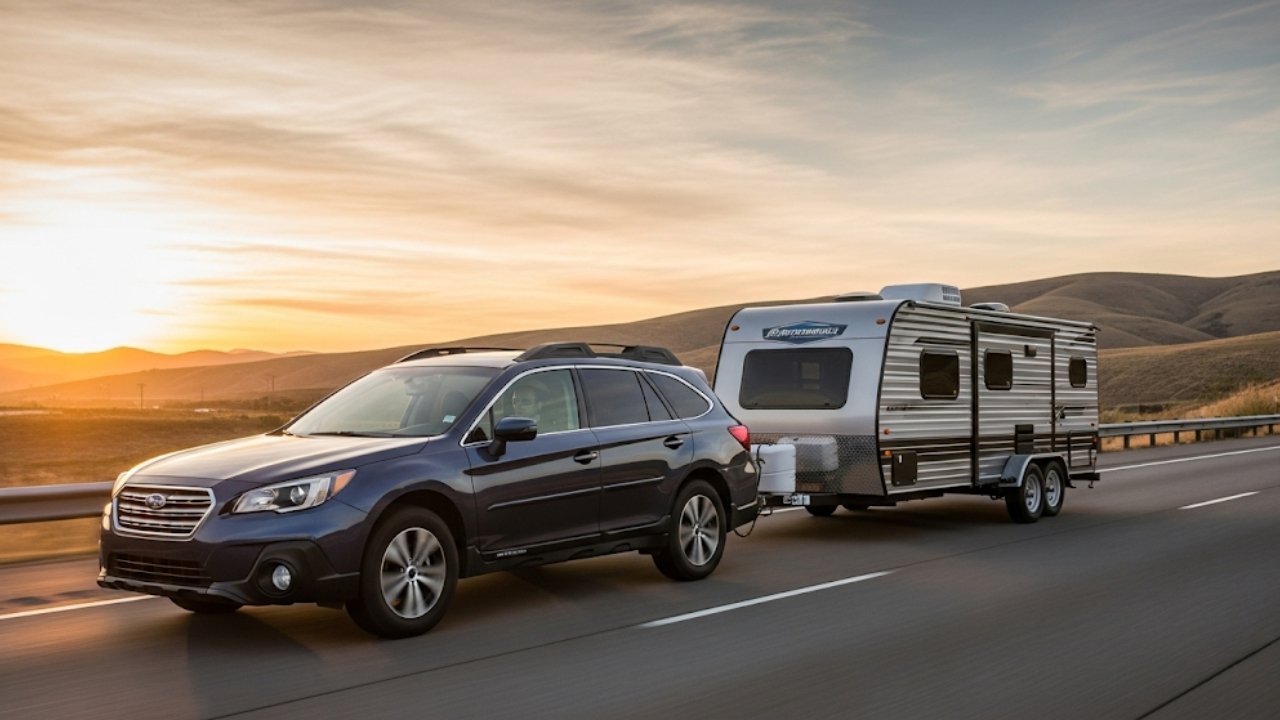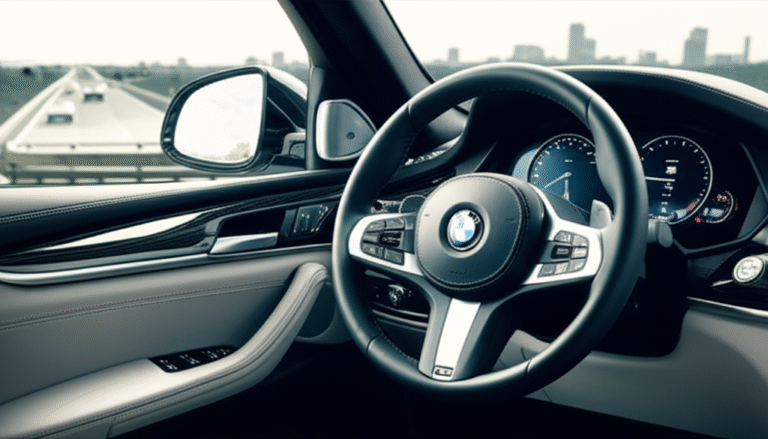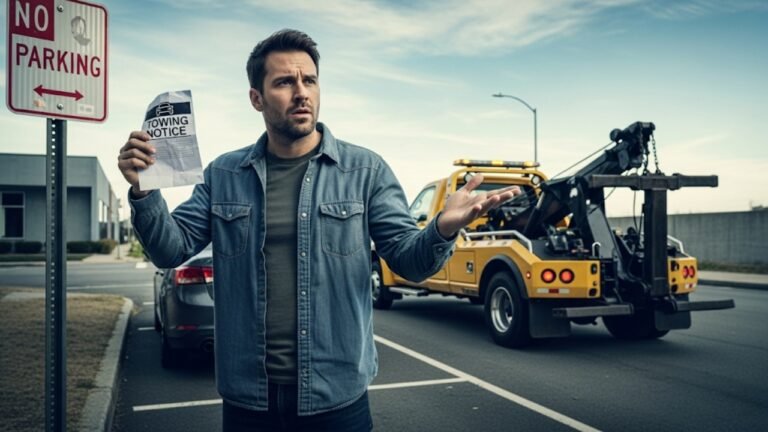What’s the Speed Limit for a Car Towing a Trailer?

Let me take you back a few summers ago. I was hauling my friend’s jet ski to the lake, confident in my trusty SUV, cruising down the highway. The sun was bright, music was on, and everything felt just right—until flashing blue lights appeared in the rearview mirror.
Yup. I was speeding. Not because I was reckless, but because I honestly didn’t know that towing a trailer came with different speed limits. I learned the hard way, and ever since then, I’ve made it my mission to understand the rules—and help others do the same.
So if you’ve ever wondered what’s the speed limit for a car towing a trailer, you’re in the right place. Let’s break it all down in the simplest way possible—no fancy lingo, just straight talk.
Why Speed Limits Change When You Tow

Here’s why that matters:
-
More weight = slower braking.
-
Wider turns = more care needed.
-
High wind resistance = sway risk at high speeds.
-
Added pressure on tires, brakes, and engine.
So, even if your car feels powerful, the trailer changes the game. And that’s why speed limits are different.
General Speed Limits Across the Globe (With Table)
Speed limits vary by country and region, but here’s a handy breakdown of general towing speed limits. Always double-check your local laws, but this will give you a solid idea.
| Country/Region | Speed Limit (Highway) | Speed Limit (Secondary Roads) |
|---|---|---|
| USA (most states) | 55–65 mph (88–105 km/h) | 45–55 mph (72–88 km/h) |
| UK | 60 mph (96 km/h) | 50 mph (80 km/h) |
| Australia | 100 km/h (62 mph) | 80–100 km/h (50–62 mph) |
| Canada | 90–100 km/h (55–62 mph) | 80–90 km/h (50–55 mph) |
| Europe (Germany, France, etc.) | 80–100 km/h (50–62 mph) | 60–80 km/h (37–50 mph) |
Keep in mind, some states and countries are stricter than others.
In California, for example, towing speed is capped at 55 mph—even if the posted limit is 70!
Key Factors That Influence Your Towing Speed Limit
Speed limits don’t just depend on location. There are other factors that could change what you’re allowed to do on the road. Let’s break them down.
1. Trailer Weight
Heavier trailers affect stability, braking distance, and traction. That’s why many speed regulations specify different limits depending on trailer size and load.
2. Type of Trailer
-
Utility trailer: Usually less risky, but still needs slower speeds.
-
Caravan or RV trailer: More sway risk at high speeds.
-
Boat or horse trailer: Requires special care during turns or braking.
3. License Type
In some places, you need a special license to tow above certain weights. Without it, you’re restricted to lower speeds.
4. Road Conditions
Rain, snow, or steep grades? Even if the law says 60 mph, common sense may say 40. A safe driver knows the road isn’t just about limits—it’s about logic.
Common Speed Limits in the USA (Detailed)
Let’s zoom in on the United States, where speed limits for trailers vary wildly between states. If you’re towing across state lines, you must know these rules.
Some examples:
-
California: 55 mph max when towing (strictly enforced).
-
Texas: 70 mph or posted limit (unless signs say otherwise).
-
New York: 55 mph on most roads unless otherwise posted.
-
Washington: 60 mph when towing on interstates.
-
Illinois: 55–65 mph depending on the area.
Many drivers assume they can tow at posted limits, but some states have hidden rules you won’t see unless you dig into the DMV site or get pulled over like I did!
How Police Enforce Towing Speed Limits
Here’s something I didn’t know until I spoke with a highway patrol officer:
“We can usually tell who’s towing too fast just by the sway of the trailer,” he said. “If it rocks like a boat in choppy water, they’re either overloaded—or over the limit.”
Radar guns and visual checks help, but trailer sway is a dead giveaway. And trust me, if an officer sees that, they won’t hesitate to pull you over.
What Happens If You Exceed the Towing Speed Limit?
Let’s say you ignore the rules. What’s the worst that could happen?
-
Fines: In California, speeding while towing can cost over $300.
-
License points: Enough infractions, and you could lose your license.
-
Increased insurance: Violations = higher premiums.
-
Accidents: More sway, less control, and slower stopping = big risks.
-
Legal liability: If you crash while towing above the limit, you may be found at fault, even if the other driver messed up.
Bottom line: it’s not worth it. Not even close.
Personal Story: Learning the Hard Way
That one time I got pulled over? It wasn’t even a long trip. I was just trying to get the jet ski to the lake—30 minutes tops. I figured, “It’s only a short drive. I’ll just go with traffic.”
Big mistake.
I didn’t know what’s the speed limit for a car towing a trailer, so I went with the flow—about 65 mph. Turns out, the limit was 55. I got a ticket and a lecture. Since then, I never tow without checking limits. Lesson learned.
Smart Tips to Stay Within the Legal Limit
Want to stay safe, legal, and avoid unnecessary stress? Here’s what I now swear by:
-
Know your local laws before you hit the road.
-
Stick to the right lane on highways when towing.
-
Use cruise control (if the road is flat and dry).
-
Install a trailer sway control system.
-
Check your tire pressure—on both car and trailer.
-
Plan your route to avoid roads with steep grades or tight curves.
These tips might seem obvious, but in the heat of a trip, it’s easy to forget the basics.
Towing on the Open Road: Not Just About Speed
I used to think towing was just about going slow. But it’s so much more than that. It’s about awareness. Patience. Responsibility.
Think of it this way: Driving with a trailer is like dancing with a partner. You’ve got to stay in sync. Make smooth moves. Avoid jerky steps. And always, always anticipate what’s coming next.
When you tow at the right speed, you’re not just following the law—you’re protecting lives, including your own.
How to Know You’re Going Too Fast (Without a Speedometer)
Sometimes, it’s not about what the needle says—it’s about what your gut tells you. Here are signs you’re probably pushing it too hard while towing:
-
You feel the trailer tug or push the vehicle when braking.
-
Swaying begins with crosswinds or lane changes.
-
Turns feel wider or sloppier than expected.
-
You’re struggling to stay in your lane on curves.
If any of these happen, it’s time to ease off the gas and regain control.
Understanding Towing Speed Limits in the UK and Australia
Let’s briefly explore a couple of other popular regions.
United Kingdom
In the UK, the rules are quite specific:
-
Motorways and dual carriageways: 60 mph max when towing.
-
Single carriageways: 50 mph max.
-
You’re not allowed in the right lane of a three-lane motorway.
UK drivers are generally well-informed, but visitors often overlook these details. I’ve had cousins from abroad shocked when they realized they were unknowingly breaking the law on the M1.
Australia
Australia is vast—and so are its roads. That doesn’t mean you can hit 130 km/h while towing!
-
100 km/h is the national standard for cars towing trailers.
-
Some states like Western Australia allow 110 km/h, but only with specific trailer types.
-
Long, empty roads can lull you into speeding, but kangaroo crossings and strong crosswinds make high speeds risky.
In fact, one Aussie friend told me, “It’s not about how fast you can go—it’s how fast you can stop.”
Smart words.
How Trailer Design Affects Safe Speed
Not all trailers are created equal. Let’s break it down:
| Trailer Type | Design Impact | Speed Advice |
|---|---|---|
| Box trailer | High drag, poor visibility | Keep under 60 mph |
| Flatbed | Less wind resistance, but unstable loads | Secure loads, 55–60 mph |
| Boat trailer | Narrow but top-heavy | Extra caution in wind, < 60 mph |
| Caravan | Heavy and large surface area | No more than 50–55 mph |
| Livestock trailer | Shifting weight from animals | Slow speeds, smooth braking |
The heavier or taller the trailer, the lower your speed should be—even if the law allows more.
The Myth of “Keeping Up With Traffic”
Here’s a myth that gets a lot of folks in trouble:
“I was just going with the flow.”
Big mistake.
Traffic often moves above the speed limit, especially on highways. If you’re towing, trying to keep up can land you in legal or mechanical trouble.
Trailers don’t handle abrupt braking or sudden lane changes like solo cars do. In fact, your trailer might not even be rated for the speeds other cars are doing.
It’s better to let others pass and stay safe than try to blend in and lose control.
Real Talk: What Towing Too Fast Feels Like
Have you ever felt your steering wheel shake slightly while towing? That’s not just road texture—that’s a warning.
It’s like driving on a tightrope with a gust of wind threatening to knock you over. The faster you go, the more fragile everything feels. Braking starts to lag. Turns take longer. Your margin for error shrinks.
I remember once towing an old camper through Arizona. The downhill stretches made it easy to pick up speed—but the curves made it terrifying. I felt the whole thing lurch sideways at 65 mph. I tapped the brakes, heart pounding. That was the last time I let gravity do the driving.
FAQs: What’s the Speed Limit for a Car Towing a Trailer?
1. Can I drive at the posted speed limit while towing a trailer?
Usually, no. Many regions have lower speed limits for vehicles towing trailers. Always check your state or country’s towing laws.
2. Is it illegal to exceed the towing speed limit?
Yes. Exceeding the towing speed limit can result in fines, points, and even court appearances, especially if it leads to an accident.
3. Do electronic signs show towing speed limits?
Not always. In most places, towing limits are not posted on roadside signs. You need to know them before you hit the road.
4. What happens if my trailer starts swaying?
Slow down immediately. Gently ease off the accelerator—don’t brake hard. Try to maintain a straight line and regain control.
5. Are speed limits different if I have a trailer brake system?
Not usually. While trailer brakes improve control, they don’t raise the legal speed limit. You still have to obey posted towing limits.
6. What’s the best lane for towing on highways?
Always stick to the right lane or the second from the right. Avoid overtaking unless absolutely necessary.
7. Can I use cruise control while towing?
Yes, but only on flat, dry roads. Avoid cruise control on hills or in rain—it can make swaying worse.
8. Does towing affect fuel economy?
Big time. Towing adds drag and weight, which means your car works harder. Driving slower helps reduce fuel burn.
Final Thoughts: Drive Smart, Tow Safer
So, what’s the speed limit for a car towing a trailer?
It’s not a simple number—it’s a combination of law, common sense, vehicle condition, and experience. You might be legally allowed to drive 60 mph, but that doesn’t always mean you should.
Towing isn’t just a technical task. It’s an emotional responsibility too. You’ve got extra weight behind you—possibly someone else’s property, even someone’s horse or boat or camper full of family memories. You’re the captain of that little convoy. And good captains don’t speed in the storm.
So the next time you hitch up your trailer, remember:
-
Check the laws
-
Drive slower than you think you should
-
Stay focused, stay humble
-
And above all… arrive safe.






